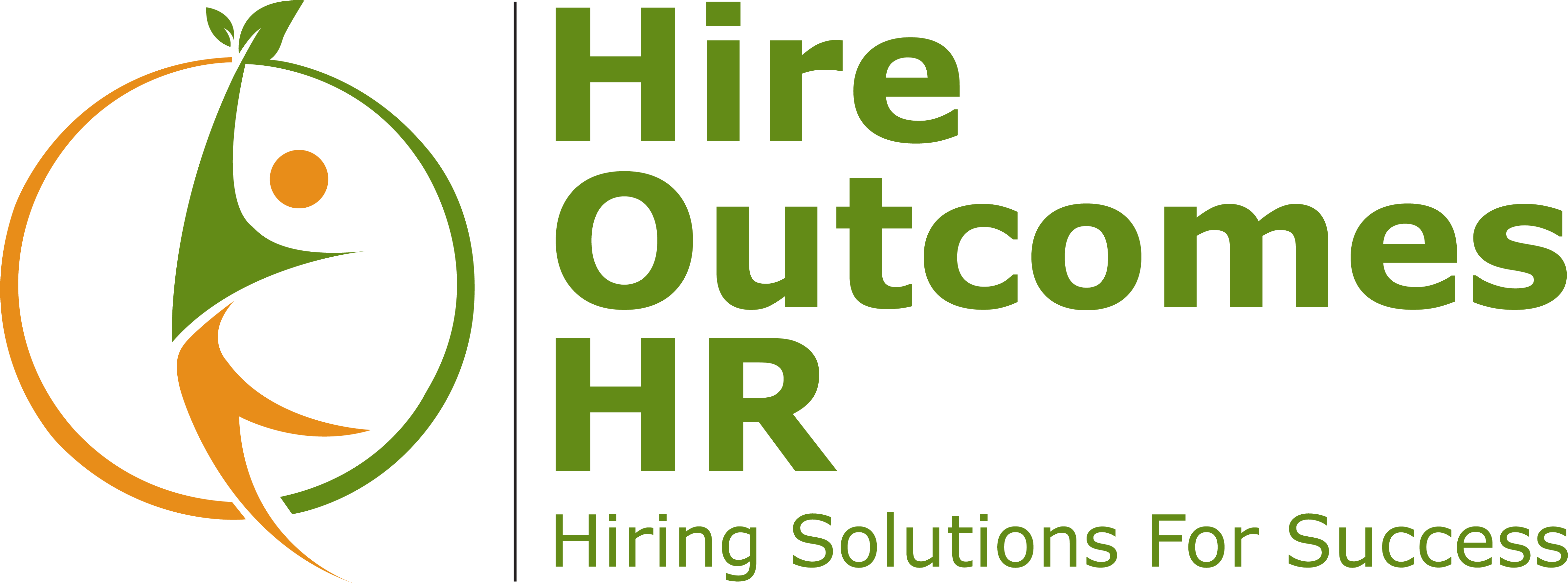ATS Issues can Increase Fill Time
ATS issues can increase fill time and hurt recruiting results. No doubt about it: Online Applicant Tracking Systems (ATS) have revolutionized recruiting at companies large and small. And for the most part, it has been a revolution for the better. Easier compliance with laws and regulations, more efficient screening, lower costs – all are well-documented benefits to using an ATS.
But what if the software that you think is helping is actually harming? What if your IT department, have selected and implemented a system that actually increases your time-to-fill, detracts from the candidate experience, and harms your employer brand?
At Hire Outcomes HR, we have been in the recruitment business long enough to see how ATS has evolved through the years, and we have worked with different ATS’s to have a solid understanding of best practices. Here are 5 key lessons we’ve learned about ATS.
1) Don’t think of the recruitment process as a business process
This might come as a surprise coming from a company like Hire Outcomes HR that offers recruitment process outsourcing (RPO). But here’s a little secret: Internally, we never think of recruiting and hiring as just a “process.” Sure, there are business processes like manufacturing or payroll, but the recruiting “process” is fundamentally different in that what you are “processing” are not widgets or dollars, but human beings. People. With feelings and fears and frustrations. Just like you and me.
As a human resource professional or hiring manager, you know this. But knowing is not enough. You need to be a champion for treating people right. Finance may recommend an ATS because of cost, or IT may recommend an ATS for ease of implementation. Their opinions definitely matter. But never forget that your opinion as a human resource professional matter just as much, if not more.
All too often, we have seen an ATS selected for reasons such as cost or ease of implementation. And all too often, we have found that the cheapest or easiest solution is not the best solution for actually recruiting candidates. Be sure to test any ATS from an applicant’s perspective. Make sure you can get the metrics and reporting you need to be an effective manager. Test how the ATS allows you to communicate with candidates. Know your needs, know your candidates’ needs, and then be a champion for them.
2) Anything that shrinks your talent pool increases your time-to-fill
The fewer candidates you have, the smaller your chances are of finding the perfect fit. Too many ATS’s put up barriers to completing a job application. And barriers shrink your applicant pool.
Often you need to create an account with a complex password before you can even submit an application. Next, you need to manually re-enter the personal information that’s already in your resume – using the virtual keyboard on your mobile phone. Often you can’t use the “easy apply” buttons on major job boards such as LinkedIn or Indeed.
We can’t share confidential client data, of course, but we can share this observation: Clients who use clunkier ATS’s get fewer applicants per open position than similar clients with easier-to-use ATS’s. It may be cliché these days, but at Hire Outcomes HR, we absolutely believe in the importance of user/candidate experience and human-centered design. These should be critical factors in evaluating an ATS for your business.
3) Mobile matters
You probably already know that a majority of web searches are now conducted from mobile devices, not desktop computers. It’s a fact not lost on Google, which in 2018 implemented mobile-first indexing. This means that Google uses the mobile, not desktop, version of a Website in determining page ranks and which Web pages are displayed first.
If you think mobile doesn’t matter for recruiting—think again.
A 2017 study from Indeed found that the majority of job searchers conduct their searches using mobile devices. And by “job searchers,” Indeed did not mean “Millennials Only.” They meant “everybody.” In 2016, 78% of millennials conducted a job search using a mobile device, just slightly more than the 73% of Generation X job seekers. Even among Baby Boomers (the oldest who are now well past retirement age) the percentage of job seekers using a mobile device for their searches was 57%.
What this means is that whatever ATS you choose, it’s not enough to be “mobile enabled.” It must be “mobile optimized.” Be sure to test the mobile user experience and see if an ATS is serving a positive mobile experience.
4) You don’t need applicant tracking. You need talent tracking.
At Hire Outcomes HR, we appreciate all the benefits that a modern ATS offers to busy human resource teams. But we are also keenly aware that what human resources needs is not applicant tracking, but talent tracking.
Say you had conducted a search for a fairly specialized position: You found the perfect candidate, as well as another strong candidate – whose experience is similar but slightly different. For a different position requiring these different skills, she would be a rock star. But how would you find her again if the perfect opening came up?
Most ATS’s, especially legacy ones, make it surprisingly difficult to search for past applicants who you may want to track for a different position, or for a different part of the organizations. Choosing an ATS that lets you track talent, not just applicants, will help you fill open positions faster.
5) ATS is not everything
At Hire Outcomes HR, we’ve noticed that many smaller companies with tight resources view subscription based ATS the wrong way. They make the mistake that “SaaS” means “software as solution,” and not “software as service.” Software will always be just a tool, and never a solution by itself.
When you are evaluating an ATS, you should also be evaluating yourself and your entire recruitment process. Do you have a strategy for sourcing resumes? Does your team have enough functional and industry knowledge to properly screen candidates? How do you find and communicate with talent, not just applicants? These are things that software can never help you with.
If you need a seasoned expert to help you think through your recruitment challenges, give Hire Outcomes HR a call for a free initial consultation. We may be able to help.
About Hire Outcomes HR
Hire Outcomes HR is here to provide the talent recruitment expertise and proven processes that big organizations use to source, recruit, and hire talent at lower cost and faster speed. Hire Outcomes HR, gives small organizations, big-organization results through our recruiting expertise. We are specialists in recruiting talent.
Recruitment is our focus. Not only is recruiting what we do day-to-day, it’s something we’ve been doing for years. Dhwani Rawal, founder of Hire Outcomes HR, has over 15 years’ experience in recruitment process outsourcing. We have placed hundreds of professionals in various healthcare organizations.
We strive to provide personalized service. We’ve recruited for a wide variety of positions, from entry level to leadership. Such a breadth of experience gives us unique insights into what works and what doesn’t – insights that we’ve used to develop the processes that give SMBs an edge in recruiting. Unlike large organizations where you get different person each time you call, at Hire Outcomes HR, when you call us you get us–personalized service from people who care about you and your organization.
Hire Outcomes HR is a woman-owned business founded in 2019 by Dhwani Rawal, a recruitment outsourcing executive with over 15 years’ experience placing entry-level and professional talent in a wide variety of industries, including healthcare, technology, and construction.
Hire Outcomes HR levels the playing field for human resources at smaller and mid-size companies by providing the proven processes and technologies that big corporations use to source, recruit, and hire talent at lower cost and faster speed.
Learn more about Hire Outcomes HR, call us at 651-797-3479.
How Applicant Tracking Systems Hurt Your Recruiting
Facebook
Twitter
Linkedin
Link



No responses yet